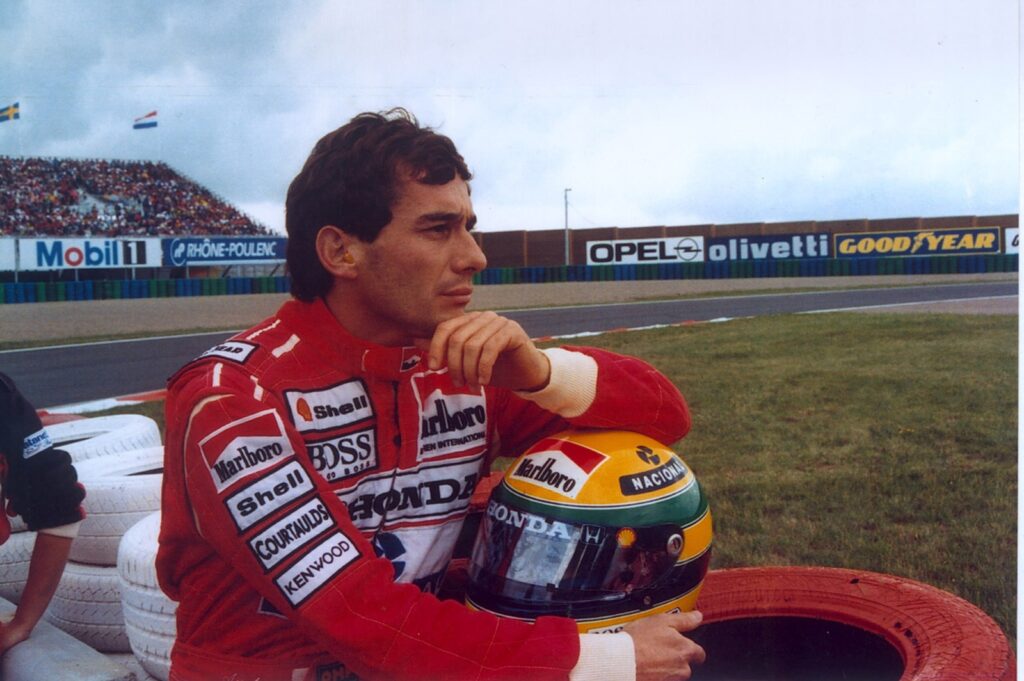
Every time a young gun flexes his muscles and starts raining down sixes in the Indian Premier League (IPL), it isn’t uncommon for old fogies to say: “Wait till he plays on a track with pace and bounce, where the ball nips around.” This kind of comment doesn’t necessarily stem from jealousy or resentment. It’s a simple reminder that sporting greatness has to be earned. In Formula 1, the litmus test – the equivalent of a fast pitch with extravagant seam movement, or a raging turner – is quite simple. How do you handle your car in the wet?
To understand why Aryton Senna, who passed away in tragic circumstances at Imola 30 years ago today, is still so revered among the racing fraternity, one word is enough: rain. When the going got tough, really tough, there was Senna, and then daylight. No other driver in the history of the sport has shown such ability in the most trying conditions. Even if you’ve only ever driven a high-powered kart, it’s not hard to understand that handling an F-1 car in the rain is a bit like trying to keep control of a giant soapbox fitted with a light-aircraft engine.
The Monaco Grand Prix in June 1984 was the first to offer the racing world a glimpse of its future. Alain Prost and Nigel Mansell, both future world champions, were on the front row of the grid. In 13th place, driving an under-powered Toleman, was Senna, the Brazilian in his first season in the big time. In pouring rain, as driver after driver skidded off and Prost kept signalling to the marshals to stop the race, Senna moved through the field like Pac-man chewing up Power Pellets. Jacky Ickx, the race clerk, stopped the race just as Senna passed a slowing-down Prost at the end of the 32nd lap. But with positions controversially decided on the basis of the last completed lap, Senna had to settle for second place. The gauntlet, though, had been thrown down and F-1 would never be the same again.
At the Portuguese Grand Prix in Estoril nearly a year later, there was no such debate. In the distinctive black-and-gold livery of the John Player Special-Lotus team – the most beautiful car the paddock has ever seen – Senna started on pole. Michele Alboreto’s Ferrari was the only car that he didn’t lap at least once as he won by over a minute. “It was a very hard race, even more difficult than last year in Monaco because the conditions were a lot worse,” he would say later. “I could not see anything in front of me when cars were in front.”
.@F1 and fans have missed #AyrtonSenna every day, even as new champions took centre stage. But even as we continue to mourn him, we mustn’t forget #RolandRatzenberger either.
✍️ @kannandelhi #Formula1 https://t.co/UWuphfkzxv
— RevSportz (@RevSportz) April 30, 2024
This handling of often inferior machinery in the harshest conditions played a big part in the creation of the Senna legend. Even after his World Championship years, when he had become a slightly more mellow individual, this incredible talent would be on display when the heavens opened. At Donnington Park in 1993, in a McLaren that was no match for the Williams-Renaults of Prost and Damon Hill, Senna started fourth on the grid.
But in the greatest lap in racing history, Senna went past Michael Schumacher and Karl Wendlinger before the Craner Curves were over, and relegated Hill to his slipstream at McLean’s Corner. Prost was overhauled at the Melbourne Hairpin just before the end of the lap. He would beat Hill by nearly a minute and a half. Everyone else, including Prost, was lapped at least once.
No sport, however, is about results alone. It exists because of charisma. Whether that was a Diego Maradona, a Michael Jordan or a Viv Richards, millions grew up just wanting to be like them. They were, at the cost of sounding sacrilegious, living Gods. Senna belonged to that category. Not long ago, there was a documentary asking: Just How Good was Ayrton Senna? Among those who named him as the greatest ever? Fernando Alonso, Mika Hakkinen and Schumacher himself.
The tears will never dry. There is this beautiful passage from Richard Williams’ The Death of Ayrton Senna, the definitive work on that tragic week and a racing life like no other. ‘Outside the railings were festooned with banners, many of them bearing the same word: saudade. “It’s the most beautiful word in the language,” my friend said as we went outside to buy some bottled water. “And it’s one of those for which there’s no direct translation. It means the sense of loss and sadness you feel when the person you love isn’t there any more. No other language has this word.”’
The San Marino Grand Prix was last held in 2006, a generation ago. But for as long as racing exists, the memorial at the Tamburello curve will remain as a shrine to a driver who always found a way, as though from another time and space.
Taken from us far too soon, but never forgotten.



